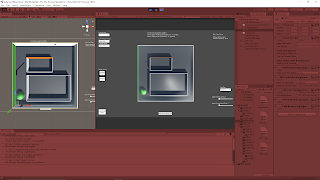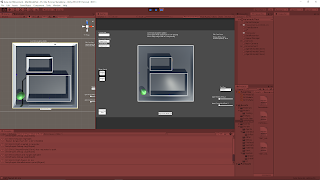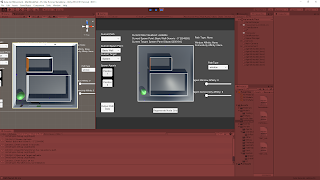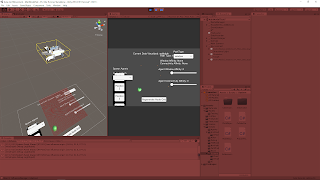October 29, 2020
Automating Component Application and System Manager
Architecture AI Pathing Project
System Manager and Initialization
The integration of several classes and adding more has started to create a lot of necessary references becoming difficult to time properly. To make sure a certain class has already initialized or some other class has performed its Awake() method I end up making extra references and method calls within other classes so the proper references are set before peroforming those methods.
In an effort to organize this better and make the timing more understandable, I am looking at making a SystemManager gameobject to replace the DemoManager, and either add an Initialization class to this or make it its own class if it does not require being a monobehaviour. This Initialization class will be responsible for calling all the major system classes initialization methods in the proper order to ensure references are met. This will also require moving some Awake and Start methods from other classes to some Initialization method.
This could also be a good case for an interface dealing with initialization. I could then make all the major system classes implement this interface and then plug them into an Initialization Manager class that calls each of the interface implementing objects’ Initialization methods.
Automating Component Application to the Imported Architecture Models
To make the system more user friendly, the more it can automate the better. The system uses Influence objects as the basis of many of the architectural elements applying their effects to the surrounding area, but these are components that must be added to the objects themselves. Since the objects are coming in as part of a large scale model from software like Revit or 3DS Max, they have nothing on them ahead of time. Right now specific objects need to manually be found and have the proper components applied, so we would like to automate that process.
Approach 1 – Gather All Children of Imported Models and Apply Components and Layers by Name
The first approach I will try involves manually adding a reference to an imported model object in Unity’s inspector, and this will give the new class (named ApplicatorManager) a reference to create a gameobject list of all the children objects. From here, ApplicatorManager can go through each object and check if its name contains a certain string to determine which objects to apply the designated layers and components to.
To create this connection of strings and components or layers, I am creating a new small data class called Applicator. This will hold: a string (search term to look for in names of objects), an enum (either “component” or “layer” to determine which thing it will be adding), and either an Influence object (for component) or a layer integer value (for layer). The ApplicatorManager will have an array of these Applicator objects which the designer can add/remove from in the Inspector and fill in the search term, whether that should add a component or layer, and which one for each element in the array.
Summary
I think organizing all of the initialization processes for the several main system core classes will be beneficial for controlling the reference timings as well as thinning out some of the larger classes. The Applicator approach I am looking at adding may not be terribly efficient, but it only needs to be run once at the start of setting up a model each time so it will be good for getting the connections setup for now. Since I am looking at a component application method, it could be worth looking into an option that can do this in the Unity editor so it only needs done once a model is imported and not each time the project is actually run. This could be a good way for reducing load times of the system.
via Blogger http://stevelilleyschool.blogspot.com/2020/10/architecture-ai-pathing-project-system.html



